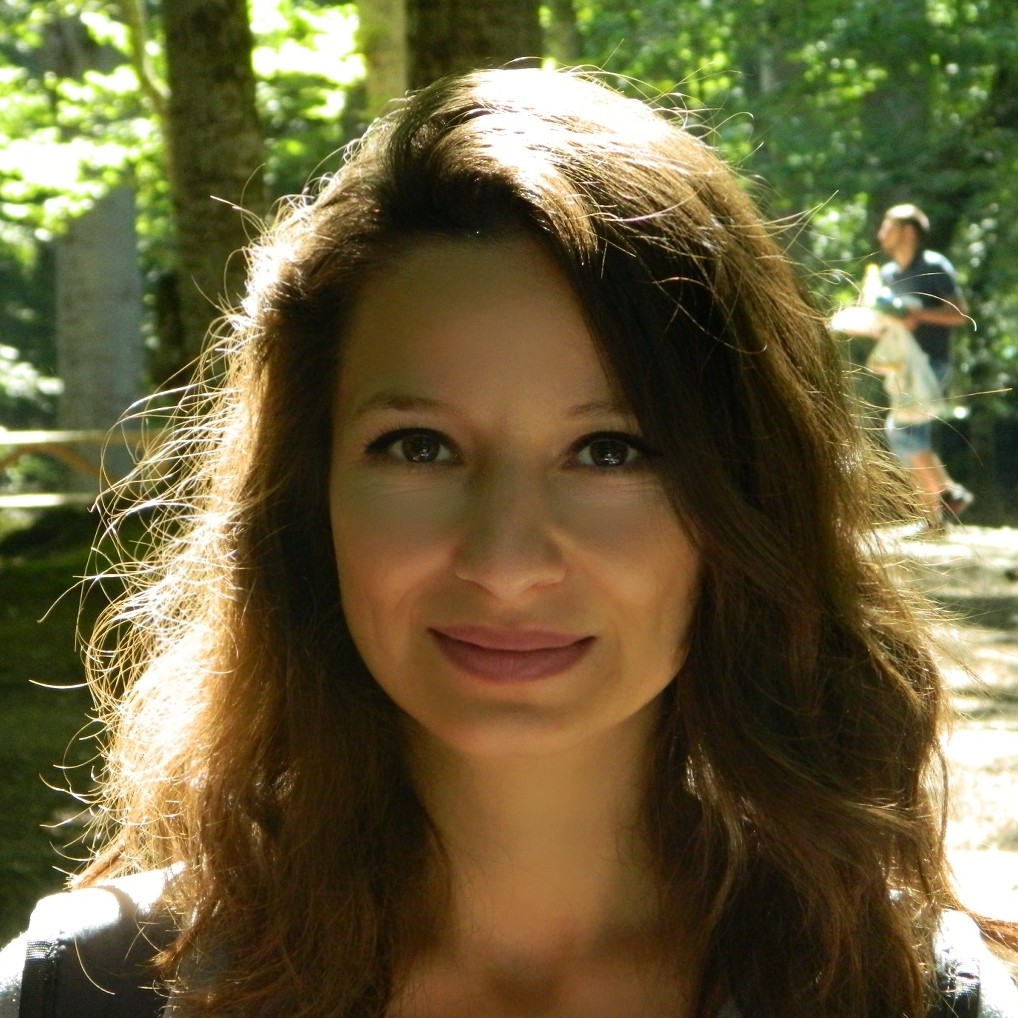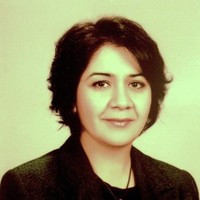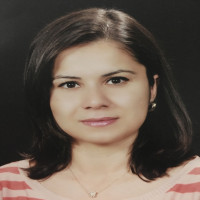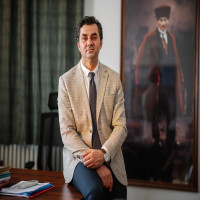Research Article
İnceleme Makalesi
Issue Editorial Board






 0000-0002-4513-6310
0000-0002-4513-6310




 0000-0001-7636-7253
0000-0001-7636-7253
Aim & Scope
The Turkish Journal of Archaeology and Ethnography is a scientific, international and peer-reviewed journal published two times a year in English and Turkish by the Ministry of Culture and Tourism, General Directorate of Cultural Heritage and Museums. The journal, which is published free of charge in print and electronic format, will include scientific articles on archaeology, art history, ethnography and disciplines related to its sub-branches, especially studies within the borders of Türkiye. Documenting and examining the cultural richness of all civilizations in the history of Türkiye from prehistoric times to the present, and the values associated with Turkish Culture in Central Asia, the Balkans, North Africa and the Middle East, and announcing new findings to the academic circles and the public are among the main purposes of the journal. Decisions regarding the publication policy, scope and content of the journal are taken by the Editorial Board determined by the General Directorate of Cultural Heritage and Museums of the Ministry of Culture and Tourism.
The journal publishes studies, comments and reviews made in all fields related to archaeology, art history and ethnography within the borders of Türkiye, as well as qualified, original articles on Ancient History Geography, Prehistory, Protohistory, Asia Minor and Classical Archaeology, Museology, History of Antiquity, Epigraphy, Numismatics, Anthropology, Archaeometry, Conservation-Repair and Restoration, Architectural History and Hittitology subjects in accordance with the ethical principles and rules. It is also open to new interpretations and approaches in the fields of cultural heritage management and other social sciences in connection with the specified branches of science, and articles about the leading studies on detection, application and analysis. While the journal will not include manuscripts which only introduces material and the preliminary reports of the excavation, articles that are newsworthy about original finds will be accepted.
Independent, double blind peer-reviewed, open access and online journal accepts academic papers written in Turkish and English. The manuscripts submitted to the journal should not have been previously published or in the evaluation process in another medium. The manuscripts that are deemed appropriate to the writing rules and the scope of the journal are sent to two referees who are experts in their fields for scientific evaluation. The Editorial Board follows the Committee on Publication Ethics (COPE) criteria and carries out the evaluation process by taking into account the comments of the referees.
Author Guidelines
Attention should be paid to the submission of the manuscripts as specified below:
1. Publication Language: The language of the journal is English and Turkish.
2. Title: It should be a title that is compatible with the content, best expresses it and should be written in bold letters. The title of the article should be maximum 12 words.
3. Author Name and Contact Information: Since the journal applies a double blind review system, information about author identities should not be given in the article. Authors are required to fill in the Cover Page, which includes the author's name and address, affiliated institution, academic title, address, telephone number, e-mail address and ORCID number, and upload it via journipark. If the submitted study has more than one author, the names of all authors should be listed in proportion to their contribution to the study.
4. Abstract and Keywords: At the beginning of the article, there should be an abstract in Turkish and English, which briefly and concisely expresses the subject and consists of at least 75 and at most 300 words. At least 5 and at most 8 keywords should be given with one line space under the abstract.
5. Main Text:
• It should be written in MS Word programme, in Times New Roman font, 12 pt and 1.5 line spacing. Manuscripts should not be less than 4,000 words and should not exceed 10,000 words.
• APA 7 spelling rules must be followed in article writing. Information about spelling rules can be obtained from https://apastyle.apa.org/.
• While preparing the texts, the spelling rules of the Turkish Language Association should be followed. During the spelling of words, the dictionary application on the website of the Turkish Language Association (https://sozluk.gov.tr/) should be taken as a reference.
• Abbreviations should be made in accordance with the rules on the Turkish Language Association website (https://tdk.gov.tr/icerik/yazim-kurallari/kisaltmalar-dizini/).
• It is expected that abbreviations should not be used in the text except for very common abbreviations such as BC, MS and measurement and weight units such as km, kg, m, cm, m² and m³. In cases where abbreviations other than standardised examples such as BC, MS and measures of length and weight are desired to be used, it is necessary to give the explicit form and abbreviation in parentheses in the first use, and the abbreviations should be transferred in the following sections of the text. For example: Finds from the Early Bronze Age (EBA) layer.... Continuation of the EBA wall....
6. Section Headings: In the article, main, intermediate and subheadings can be used in order to ensure regular information transfer. It is expected to follow APA 7 spelling rules in heading styles. The main and subheadings should not be numbered.
7. Quotations and References:
• Direct quotations from other texts should be enclosed in quotation marks if they are less than 40 words. If the length of the quotation is 40 or more words, it should be written as a block on a new line and indented 0.5 inch on the left margin without quotation marks.
• References made in the text should be written in brackets as follows (Akurgal, 1995, p. 44). For publications with two authors, the example of (Erdem and Yenice, 2008) should be followed. In publications with more than two authors, only the surname of the first author and the abbreviation ve ark. (For example: Tunç et al., 2001, p. 45, fig. 3b) should be used in the text.
• Footnotes should be used only for explanations and automatic numbering should be used.
• In cases where the name of the author cited in the text is given, only the publication date of the source should be written. For example: ‘According to Eyice (1985, p. 21)...’
• If more than one source is included in a citation, the sources should be listed in order from the older to the more recent (Akurgal, 1966; Özgüç, 1969; Erkanal, 1983).
• In cases where a work is used, the page number of the cited work and, where necessary, the figure number should be clearly indicated (e.g. Cook, 1966, p. 192, fig. 4).
• All references utilised should be given at the end of the text under the heading ‘References’. It should be ensured that publications that are not used in the text are not included in the bibliography and that all publications used in the text are clearly indicated in the bibliography.
8. Tables, Maps, Drawings, Graphics, Figures and Photographs:
• The number of images to be accepted in articles is limited to 15. Photographs, figures, tables, maps and similar images should be placed in the appropriate place in the text of the paper, including their captions, and all images used should be sent separately from the text in JPEG format at a resolution suitable for printing. If a photograph to be used, it must be at least 300 dpi in size; figures, maps, plans and similar drawings must be at least 600 dpi in size. In order not to cause confusion during the design phase, each image should be ordered according to its number in the text.
• All visuals such as maps, pictures, drawings and graphics used in the text should be given under the title of figure.
• Vertical lines should not be used in table drawing, horizontal lines should be used only to separate the subheadings given in the table. Table number and description should be centred at the top.
• Maps, drawings, graphics, figures and photographs can be used in the text when necessary, but they should be given under the heading ‘Figures’ at the end of the text. Figure descriptions should be written in normal sentence order and italicised above the figure.
• For multiple images, the names should be given with the figure number followed by a letter; references to the images in the text should also be transferred in this way. For example: ...Of the two oil lamps recovered during the excavation, the first example is dominated by floral decorations (Figure 3a), while the other example recovered in fragments is dominated by geometric patterns (Figure 3b).
9. Bibliography: The references utilised in the text should be written alphabetically according to the surnames of the authors in the bibliography section following the appendices at the end of the text in accordance with the examples given below. In the bibliography section, if an author has more than one publication, it should be sorted according to the publication date, and the publications of an author published in the same year should be given with letters (such as 2001a, 2001b) next to the publication date.
Examples:
Single Authored Book Görkay, K. (2015). Zeugma, the treasure of history. National Geographic Turkey.
Morrisson, C. (2002). Numismatics, the science of ancient coins: An overview (Zeynep Çizmeli Öğün, trans.). Archaeology and Art.
Multi-Authored Book Yenişehirlioğlu, F., Müderrisoğlu, F., Akpolat, M. and Alp, S. (1995). Mersin Houses. Ministry of Culture.
Theses Caner, Ç. (2002). A Study on portal composition and its contribution to façade design in Anatolian Seljuk buildings [Unpublished master's thesis]. Middle East Technical University.
Single Authored Article from a Journal Bilici, Z.K. (2005). A German token uncovered during the Alanya citadel excavations. Adalya, 8, 351-356.
Multi-Authored Article Bennett, J. and Young, R. (1981). Some new and some forgotten stamped skillets, and the date of P. Cipius Polybius. Britannia, 12, 37-44.
For detailed information, you can visit the APA web page. https://apastyle.apa.org/
PUBLICATION POLICY
(1) Turkish Archaeology and Ethnography aims to publish scientific and original studies related to archaeology, art history, ethnography and their sub-branches and related disciplines, especially those carried out within the borders of Turkey, and to publicise them at the international level.
(2) The journal accepts articles in Turkish or English.
(3) The Journal, which is published in print and online, is published twice a year, in January and July. Special issues may be published when decided by the Editorial Board.
(4) Studies such as book reviews, translations, and articles that contain only technical evaluations and have the quality of reports are not accepted for evaluation. Articles under 4,000 words (including tables and figures) and over 10,000 words (excluding references) are not evaluated.
(5) The evaluation and publication processes of the articles submitted to the journal are carried out through the DergiPark system (https://dergipark.org.tr/en/pub/arkeolojiveetnografya) provided by TÜBİTAK ULAKBİM.
(6) The journal undertakes to apply the highest standards of publication ethics and to follow the implementation guidelines prepared by the Committee on Publication Ethics (COPE: Committee on Publication Ethics).
(7) The articles in the journal are archived on Dergipark.
(8) The journal follows an Open Access policy and is licensed under the Creative Commons Attribution-NonCommercial-NoDerivatives 4.0 International Licence. Access to all articles published in the journal is free of charge.
(9) All legal and scientific responsibility for the content of the articles published in the journal belongs to the author(s) of the article. By filling out the ‘Ethical Principles and Responsibility Declaration Form’, the author(s) of the article are deemed to have accepted that the article has been prepared in accordance with ethical principles and that they are responsible for any legal processes that may arise regarding the content of the article.
(10) All authors submitting articles to the journal have equal rights. No privileges are granted to the study or author in the evaluation, acceptance and publication processes of the articles. The order of publication of accepted articles is based on the time of acceptance.
(11) No fee is requested from the authors during the processes such as evaluation, acceptance and publication of the articles submitted to the journal.
(12) The publication rights of the published articles are deemed to be transferred to the Journal with the ‘Copyright Transfer Form’. This transfer also includes publication in the virtual environment. Articles accepted for publication are published by the Journal with full ownership of the publication rights.
(13) Since the Journal applies a double blind refereeing system, no information regarding the identity of the authors should be included in the text. Author information should be sent by filling out the ‘Cover Form’ separately from the article text. If the study is supported by a research institution or fund, the name of the supporting institution and project number; if it is produced from a master's or doctoral study, information about the study in question and the acknowledgement section should be stated in the cover form.
(14) As of 2020, the TR Index Journal Evaluation criteria have been updated and especially the articles related to the ethics committee permission required in scientific research have been detailed. Researchers who require ethics committee permission are expected to upload this document. The author(s) of the article(s) that do not require ethics committee permission should fill in and submit the ‘Declaration of No Need for Ethics Committee Permission Form’. For which articles, the Ethics Committee Permission Certificate is required is explained in the form in question, and articles that are not uploaded to the system and/or do not provide information about Ethics Committee Permission in the article will not be evaluated.
Nature of Articles
(1) The journal includes qualified and original articles written as a result of research in all fields related to archaeology, art history and ethnography, primarily within the borders of Turkey. The subject area is limited to Prehistoric Archaeology, Protohistory and Asia Minor Archaeology, Classical Archaeology, Historical Geography of Antiquity, Anthropology, Ancient History, Epigraphy, Numismatics, Museology, Archaeometry, Conservation-Repair and Restoration, Art History and Ethnography. In connection with these disciplines, articles on new interpretations and approaches in Cultural Heritage Management and other social sciences, as well as first-time detection, application and analysis studies are also accepted to the journal.
Original research and review articles that will contribute to scientific studies in these fields, are based on scientific criteria and research, have a rich bibliography, and present criticisms and opinions on the subject examined are included.
(2) The submitted articles must not have been previously published or accepted for publication in another publication organ.
(3) Author(s) should prepare and submit their manuscripts according to the writing rules published on the Journal's website. Manuscripts that do not comply with these rules will be rejected without proceeding to the evaluation stage.
Evaluation Process
(1) Submitted articles are evaluated by one of the journal editors assigned according to the subject of submission before being submitted to the referees. In this context, the editor evaluates the article
• Compliance with the scope of the journal,
• Compliance with publication principles and publication ethics,
• With its scientific quality and originality
• Formal and general content adequacy is evaluated.
• Ithenticate and Turnitin programmes are used for similarity screening. At the article submission stage, the similarity should be at a maximum of 20%, excluding citations and bibliography.
(2) The editor receives the opinion of the Editorial Board within the scope of preliminary evaluation. The article is forwarded to two members of the editorial board who are experts in the relevant subject and an internal referee application is carried out. In line with the suggestions of the editorial board members, the editor may carry out the double blind review process or rejection of the relevant article. The preliminary control of the articles sent to the journal, the appointment of referees and the decision to publish according to the referee evaluations are made by the Editor.
(3) Articles that are deemed appropriate at the preliminary evaluation stage are assigned to referees related to their field. Unsuitable articles are rejected by the Editor and the author is informed accordingly.
(4) At the referee evaluation stage; referees carry out their evaluations on the full text added to the system by the authors and without any statement about the author(s) of the article.
(5) Each referee completes the Referee Evaluation Form and carries out his/her evaluation according to the evaluation criteria in the form and submits the evaluation result (rejection, acceptance, correction, comprehensive correction) to the Editor within the specified period.
(6) A double blind peer review system is used in the evaluation of articles submitted to the journal. Two referees who are competent in their fields are appointed according to the subject of the article. The referees evaluate the suitability of the article for publication and record their suggestions for changes to be made on the form template. The referees can choose to accept the article without changes, accept it with minor changes, request major changes and resubmission, or reject the article. In case of a request for changes from the referees, the article should be revised by the author in line with the recommendations made. In cases where the referees request minor changes, they may choose to see the manuscript again or declare that the manuscript can be accepted after the changes have been checked by the field editors. If extensive changes are requested, the article is re-evaluated by the field editor after the changes made by the author and returned to the referees for control. Authors are required to process the changes made as a result of the referee evaluations on the ‘Referee Response Form’ and upload it to Dergipark. If the revisions made by the author are approved by the referee and the Editorial Board, the article is accepted. Articles that receive negative feedback from the referees are not published. In order for the articles to be published in our journal, at least two referees must make a publishable decision.
(7) When a ‘Correction’ decision is taken for the submitted articles, the authors are required to make the necessary corrections within the given period and upload the final version of the article to the system. If the corrections are not made and submitted within the specified period, the Editor has the right to reject the article.
(8) The author(s) shall take into account the criticisms, suggestions and corrections of the referees and the Editorial Board. If they disagree, they have the right to state their reasons.
(9) The similarity rate of the articles submitted to the journal is evaluated during the article upload process by using Ithenticate and Turnitin programmes. Articles with a similarity rate of 20% or more, excluding citations and bibliography, are not evaluated and sent to the author. For plagiarised manuscripts detected after publication, a removal procedure is applied and an Editor's Note is published in the journal for readers.
(10) The manuscripts whose referee process is completed are examined by the Language Editors and, if necessary, the author is asked to make corrections.
(11) The manuscripts, which are decided to be published, are typeset and edited and made ready for publication and sent to the author for review.
(12) The data of the published issue is sent to the relevant indexes within 15 days.
NOTE: Articles written by our journal's own editors are sent to at least two external referees within the scope of blind review. During this period, the roles of those editors are suspended and the double blind review process is maintained.
Ethical Principles and Publication Policy
Publication Ethics Principles
Publication Ethics can be defined as a self-regulatory mechanism that insists on integrity on behalf of authors, reviewers and publishers to establish higher standards of editorial processing. Ethical standards for publication exist to ensure high-quality scientific publications, public confidence in scientific findings, and respect for people's opinions.
• Honest researchers do not plagiarise.
• They do not misattribute sources.
• They do not hide objections they cannot refute.
• They do not distort opposing views.
• They do not destroy or conceal data.
Peer-reviewed studies are studies that support and realise the scientific method. At this point, it is of great importance that all parties involved in the publication process (authors, readers and researchers, publisher, referees and editors) comply with ethical principles. Our journal adheres to national and international standards in research and publication ethics. It complies with the Press Law, the Law on Intellectual and Artistic Works and the Directive on Scientific Research and Publication Ethics of Higher Education Institutions. Our journal has adopted the International Ethical Publishing Principles published by the Committee on Publication Ethics (COPE), Directory of Open Access Journals (DOAJ) and Open Access Scholarly Publishers Association (OASPA). It also undertakes to comply with the decisions of the Turkish Editors' Workshop.
• Press Law (National Legislation)
• Law on Intellectual and Artistic Works (National Legislation)
• Higher Education Institutions Scientific Research and Publication Ethics Directive (National Legislation)
• Transparency and Best Practice Principles in Academic Publishing (International Criteria)
EDITOR RESPONSIBILITIES
Fair Assessment and Impartiality
The editors evaluate manuscripts submitted to the Journal solely on the basis of basic academic criteria such as scientific quality, importance, originality and suitability to the content of the Journal, without taking into account the race, gender, sexual orientation, ethnicity, nationality, religious belief, political affiliation or institutional affiliation of the author(s). Editorial arrangements or decisions regarding the publication of an article are not determined by the policies of other organisations or governments other than the Journal itself. The Editorial Board has full authority over the determination and publication of the content of the Journal. All manuscripts submitted to the journal are subjected to a refereeing process if deemed appropriate by the editor and/or the editorial board of the journal. Rejection of manuscripts that do not meet the basic academic qualifications and journal content is made with a reasoned decision. No manuscript whose referee process is completed negatively or which does not enter the referee process cannot be published in the Journal.
Confidentiality
The editor, associate editors, and others in the journal will not disclose any information about a submitted manuscript to anyone other than the author(s), reviewers, potential reviewers, editorial advisors, and the publisher.
Disclosure and Conflicts of Interest
The editor, associate editors and members of the editorial board will not use unpublished information, ideas and hypotheses contained in a submitted manuscript for their own research purposes without the express written permission of the authors. The editors will keep the information and/or ideas obtained during the review of the manuscript confidential and will not utilise them for personal gain. In cases where there is a possibility of conflicts of interest arising from competition, co-operation or other relationships/connections with any author, company or institution related to the articles, the editors/assistant editors will not evaluate the articles; they will request another member of the editorial board to manage the processes related to the article.
In the event that conflicts of interest and relationships of interest are revealed after the publication of the article, corrections will be published. The publication in question will be removed from the digital format of the Journal and the article index.
Publication Decisions
The Editor/Assistant Editors are responsible for ensuring that all submitted manuscripts are evaluated for publication and reviewed by at least 2 referees who are experts in their fields. In co-operation with the Editorial Board, the Editorial Board evaluates the originality, validity and importance of the manuscripts submitted to the Journal for researchers and readers; decides which of the manuscripts will be published on the basis of referee comments and applicable legal requirements in relation to defamation, copyright infringement, plagiarism, etc. They can exchange ideas with each other, the editorial board or the referees while making decisions about the articles. They can guide the authors on issues such as expression disorders and spelling mistakes in the article. Likewise, it can also warn about issues related to working method, scientific and logical errors, and problems related to content.
Participation and Co-operation in Investigations
The editors (together with publishers and/or organisations) will take corresponding action when ethical concerns arise in relation to a submitted manuscript and published manuscript. Any reported unethical publishing behaviour will be investigated, even if it occurs years after publication. If problems related to ethical violations are detected as a result of the investigation, the article in question will be corrected or withdrawn; an information note will be added in subsequent issues for published articles, and articles with proven problems related to ethical violations will be removed from the digital format and index of the journal.
REFEREE RESPONSIBILITIES
Contribution to Editorial Decisions
Peer review helps editors to make editorial decisions. It can also help authors improve their manuscripts through editorial communication. Peer review is an essential component of formal academic communication and is at the heart of scholarly work.
Promptness
Reviewers who feel incapable of evaluating the research topic of a manuscript and feel that it would be impossible to review it quickly should inform the editors immediately and decline the invitation to review the manuscript so that other reviewers can be contacted.
Confidentiality
All articles accepted for consideration are confidential documents and should be treated as such. They should not be shared or discussed with others unless authorised to do so by the editors, who may only share them under exceptional and special circumstances. This also applies to those who decline an invitation to referee.
Objectivity Standards
The reviews should be conducted objectively and the authors' ideas about the article should be clearly expressed with supporting arguments in order to improve their articles. Criticisms regarding the individual characteristics and personal opinions of the authors are not considered appropriate. In order to ensure standardisation in the evaluation process, authors are required to fill in the Referee Panel Report in the documents section under the Article Submission tab and upload it to the process files section via journipark after the evaluation.
Source Statement
Reviewers should identify published work relevant to the manuscript but not cited by the authors. It should be indicated whether any statement that is an observation, derivation or argument reported in previous publications has been cited. The reviewer should inform the editors of any significant similarity or overlap between the manuscript under review and any other manuscript (published or unpublished) about which he/she has knowledge.
Disclosure and Conflict of Interest
Invited referees who have a conflict of interest arising from competition, co-operation or any other kind of relationship or connection with any author, company or institution connected with the article or the work described in the article should immediately inform the editors by declaring the conflict of interest and decline the invitation to review so that they can contact alternative referees.
An author whose article has been published in an issue of the Turkish Journal of Archaeology and Ethnography cannot serve as a referee in the same issue. Similarly, an author's article cannot be published in the issue in which he/she served as a referee. The article of an author who submits an article to an issue in which he/she serves as a referee is published in the next issue.
AUTHOR RESPONSIBILITIES
Writing Standards
• In order to avoid loss of time and energy on both sides, authors should submit their manuscripts to the Turkish Journal of Archaeology and Ethnography in accordance with the content, purpose, scope, editorial principles and editorial rules of the journal. They should provide an accurate description of their work, followed by an objective examination of the significance of the work. The article should contain sufficient details and references, and should provide guidance for other researchers who will conduct similar studies. Review articles should be accurate, objective and comprehensive, and editorial opinions or viewpoints should be clearly written in the same way. Manuscripts whose content is not produced by the author, which contain fabricated and deliberately false statements are unethical and unacceptable.
• In case of a ‘revision required’ decision by the referee in the first evaluation, authors should systematically, thoroughly and timely respond to the referees' comments and resubmit their manuscripts to the journal by the deadline.
• Authors are also obliged to respond systematically and in a timely manner to requests from the editors during the editorial process and to suggestions for corrections made by the proofreader at the layout stage. Articles of authors who do not fulfil these obligations will be rejected.
Data Access and Storage
• During the editorial and peer review process, authors may be asked for raw data, disclosures, ethical approval, and copyright permissions. Authors are obliged to co-operate by responding promptly to these requests and should be prepared to make such data publicly available. Authors should ensure that such data are accessible to other researchers for at least 10 years after publication (preferably through an institutional or subject-based repository or other data centre), provided that the confidentiality of participants can be protected and that legal rights to proprietary data do not prevent their release. Legal rights to proprietary data do not preclude their disclosure.
• Withdrawal of manuscripts that are still in the refereeing process from the publication process is considered unethical and unethical publishing behaviour. In such cases, the relevant author(s) will not be accepted for publication in the Turkish Journal of Archaeology and Ethnography for 5 years.
Originality and Plagiarism
• Authors should ensure that they have produced and presented entirely original work, and if they have used the work and/or words of others, they should ensure that these are properly cited. Publications that are influential in determining the quality of the work discussed in the article should also be cited.
• Plagiarism can take different forms, ranging from an author introducing someone else's article as his/her own, to copying or paraphrasing important parts of someone else's article without attribution, to claiming that the results of research conducted by others are his/her own. All forms of plagiarism constitute unethical publishing behaviour and are unacceptable. Plagiarism screening is carried out prior to the referee process and a maximum of 20% similarity rate is allowed, except for the bibliography, and articles exceeding this rate are not accepted to the Journal. If scientific misconduct and plagiarism are detected after the publication of the article, the publication in question will be removed from the digital format of the Journal and the article index. The articles of the author/authors who commit such misconduct will not be accepted to the Turkish Journal of Archaeology and Ethnography for 5 years.
• Authors may submit only original works to the Journal and must properly cite and reference the quotations made in the content of the work. Although articles derived from master's and doctoral theses are included in the Journal, it is expected that these chapters will not be identical. The first page of the articles prepared from such theses and the author tag should indicate which thesis the article is derived from. It is also unacceptable for an author's article to contain a copy of part of a book or article of his/her own. In studies derived from graduate theses, the author responsible for the work and the author with the highest contribution rate must be the author of the thesis.
• The editors and editorial board members of the Turkish Journal of Archaeology and Ethnography are not responsible for the opinions expressed in the articles published in the Journal and the content of the articles. Issues related to the originality of the article and scientific errors in the article are the responsibility of the authors.
Multiple, duplicate, redundant or simultaneous send/publish
Articles dealing with essentially the same research should not be published in more than one journal or primary publication. Therefore, authors should not submit an identical or substantially similar article that has already been published in another journal for consideration. Simultaneous submission of an article to more than one journal is also unethical and unacceptable. At the same time, a study published in the Turkish Journal of Archaeology and Ethnography should not be published in another journal in the future. In case such misuse is detected, any work of the author will not be accepted to the Journal for 5 years. The publication rights of the author(s) in our journal are protected under CC-BY-NC-ND.
Ownership of the Article
Since they must take responsibility for the content, individuals who fulfil the following criteria should be listed as authors on the manuscript:
1. made significant contributions to the conception, conception, execution, data collection or analysis or interpretation of the study,
2. Those who prepare the draft or critically revise, make general assessments, hypothesise and analyse the ideas given in the content,
3. Those who have seen and approved the final version of the article and accepted its submission for publication.
People who contribute to the article in terms of technical assistance, writing, editing, etc. but do not meet the criteria for authorship should not be listed as authors. It is at the discretion of the author to mention them in the ‘Acknowledgements’ section. The corresponding author should ensure that all co-authors whose criteria are presented above are included in the list of authors and that those who do not qualify as authors are not listed as authors, and should verify that all co-authors have seen and approved the final version of the manuscript and agree to its submission for publication.
Disclosure and Conflict of Interest
Authors should disclose any conflicts of interest, if any, at the earliest possible stage, usually at the time of submission, by submitting a disclosure form and attaching a statement to the manuscript that could be interpreted as influencing the results or their interpretation in the manuscript. Examples of potential conflicts of interest that should be disclosed include financial relationships, such as remuneration, educational grants, membership of funds, employment, consultancy, share ownership and other equity interests, as well as non-financial relationships, such as personal or professional affinities and connections. All sources of financial support received during the study should be disclosed, including, if possible, the grant number or other reference numbers, if available.
Identification of Sources
Authors should ensure that they properly cite the work of others and should also cite publications that have been influential in determining the quality of the work. Information obtained through private means, such as interviews, correspondence and discussions with third parties, should not be used or reported without the express, written permission of the source.
Dangerous Situations and Human or Animal Subjects
• If the study was conducted with chemicals, procedures or equipment whose use may pose a hazard, the authors should clearly indicate this in the manuscript. If the study involves the use of animals or humans as subjects, the authors should ensure that all procedures were performed and approvals obtained in accordance with relevant laws and institutional guidelines. The manuscript should include a statement to this effect. Authors should also include a statement that if human subjects were used, they were informed during the procedures. The privacy rights of human subjects should always be respected.
• If the articles submitted to the Turkish Archaeology and Ethnography journal are obtained by using humans and animals for experimental or scientific purposes, if clinical research has been conducted on them, the ‘Ethics Committee Permission Document’ in the journal documents section must be filled out and sent. The responsibility for the permissions related to the data collected through questionnaires, interview techniques, interviews belongs to the authors and the journal management cannot be blamed for the legal responsibilities that may arise in these matters.
• In studies requiring ethics committee permission, information about the permission (name of the committee, date and number) should be included on one of the first/last pages of the article; in case presentations, information about the signature of the informed consent form should be included in the article.
Errors in Published Works
Authors are obliged to inform the editors of the journal immediately if they detect errors in their own work and to co-operate in correcting or withdrawing their manuscript. If the editors or publisher learns from a third party that a published work contains a significant error or inaccuracy, they may ask the author(s) to correct or withdraw the article. It is the authors' responsibility to provide evidence of the accuracy of the article to the journal editors. When authors notice a significant error during the publication process, they are obliged to report this error to the editor.
PUBLISHER RESPONSIBILITIES
Measures for Publications Abusing Ethical Principles
• In cases of alleged or proven scientific misconduct, fraudulent publication or plagiarism, the publisher, in co-operation with the editors, carries out the necessary work to clarify the situation. In the event of scientific misconduct, plagiarism or fraudulent publication, the manuscript will be rejected or the authors will take the necessary measures to amend it. This may require the prompt publication of a true/false statement, clarification or, in the most serious cases, withdrawal of the manuscript. The publisher, in conjunction with the editors, will take reasonable steps to identify and prevent the publication of manuscripts in which research misconduct has occurred and will under no circumstances encourage or knowingly permit such misconduct to occur.
• The Publisher does not discriminate on the basis of age, colour, religion, sect, disability, marital status, nationality, race, sex, genetic predisposition or carrier status or sexual orientation in its broadcast programmes, services and activities.
Participation and Co-operation in Investigations
The responsibility of the articles published in the journal belongs to the authors. The Turkish Journal of Archaeology and Ethnography will assist the relevant institutions and authorities in judicial and administrative investigations that may arise in cases of plagiarism and scientific misconduct and in cases of suspicions raised regarding the articles published in the Journal, by providing the information and documents in its possession upon request.
PUBLICATION POLICY
(1) Turkish Archaeology and Ethnography aims to publish scientific and original studies related to archaeology, art history, ethnography and their sub-branches and related disciplines, especially those carried out within the borders of Turkey, and to publicise them at the international level.
(2) The journal accepts articles in Turkish or English.
(3) The Journal, which is published in print and online, is published twice a year, in January and July. Special issues may be published when decided by the Editorial Board.
(4) Studies such as book reviews, translations, and articles that contain only technical evaluations and have the quality of reports are not accepted for evaluation. Articles under 4,000 words (including tables and figures) and over 10,000 words (excluding references) are not evaluated.
(5) The evaluation and publication processes of the articles submitted to the journal are carried out through the DergiPark system (https://dergipark.org.tr/en/pub/arkeolojiveetnografya) provided by TÜBİTAK ULAKBİM.
(6) The journal undertakes to apply the highest standards of publication ethics and to follow the implementation guidelines prepared by the Committee on Publication Ethics (COPE: Committee on Publication Ethics).
(7) Articles in the Journal are archived on Dergipark.
(8) The journal follows an Open Access policy and is licensed under the Creative Commons Attribution-NonCommercial-NoDerivatives 4.0 International Licence. Access to all articles published in the journal is free of charge.
(9) All legal and scientific responsibility for the content of the articles published in the journal belongs to the author(s) of the article. By filling out the ‘Ethical Principles and Responsibility Declaration Form’, the author(s) of the article are deemed to have accepted that the article has been prepared in accordance with ethical principles and that they are responsible for any legal processes that may arise regarding the content of the article.
(10) All authors submitting articles to the journal have equal rights. No privileges are granted to the study or author in the evaluation, acceptance and publication processes of the articles. The order of publication of accepted articles is based on the time of acceptance.
(11) No fee is requested from the authors during the processes such as evaluation, acceptance and publication of the articles submitted to the journal.
(12) The publication rights of the published articles are deemed to be transferred to the Journal with the ‘Copyright Transfer Form’. This transfer also includes publication in the virtual environment. Articles accepted for publication are published by the Journal with full ownership of the publication rights.
(13) Since the Journal applies a double blind refereeing system, no information regarding the identity of the authors should be included in the text. Author information should be sent by filling out the ‘Cover Form’ separately from the article text. If the study is supported by a research institution or fund, the name of the supporting institution and project number; if it is produced from a master's or doctoral study, information about the study in question and the acknowledgement section should be stated in the cover form.
(14) As of 2020, TR Index Journal Evaluation criteria have been updated and especially the articles related to the ethics committee permission required in scientific research have been detailed. Researchers who require ethics committee permission are expected to upload this document. The author(s) of the article(s) that do not require ethics committee permission should fill in and submit the ‘Declaration of No Need for Ethics Committee Permission Form’. The articles for which Ethics Committee Permission is required are explained in the form in question, and articles that are not uploaded to the system and/or do not provide information about Ethics Committee Permission in the article will not be evaluated.
Nature of Articles
(1) The journal includes qualified and original articles written as a result of research in all fields related to archaeology, art history and ethnography, primarily within the borders of Turkey. The subject area is limited to Prehistoric Archaeology, Protohistory and Asia Minor Archaeology, Classical Archaeology, Historical Geography of Antiquity, Anthropology, Ancient History, Epigraphy, Numismatics, Museology, Archaeometry, Conservation-Repair and Restoration, Art History and Ethnography. In connection with these disciplines, articles on new interpretations and approaches in Cultural Heritage Management and other social sciences, as well as first-time detection, application and analysis studies are also accepted to the journal.
Original research and review articles that will contribute to scientific studies in these fields, are based on scientific criteria and research, have a rich bibliography, and present criticisms and opinions on the subject examined are included.
(2) The submitted articles must not have been previously published or accepted for publication in another publication organ.
(3) Author(s) should prepare and submit their manuscripts according to the writing rules published on the Journal's website. Manuscripts that do not comply with these rules will be rejected before the evaluation stage.
Ethical Violation Notifications
Readers can send an e-mail to taed@ktb.gov.tr if they notice a significant error or inaccuracy in an article published in our journal or if they have any complaints about the editorial content (plagiarism, duplicate articles, etc.).
Price Policy
The publication of articles in the journal and the execution of article processes are not subject to any fee. No processing fee or submission fee is charged under any name for articles submitted to the journal or accepted for publication.

